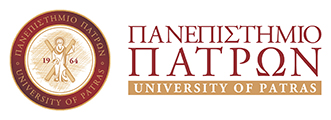Coordinator: Konstantina Nika
Lecturers: Georgios Dinos, Konstantina Nika, Vasiliki Stamatopoulou, Constantinos Stathopoulos, Tzounakas Vasileios
AIM AND OBJECTIVES
The course is an introduction to Biochemistry including basic cellular functions and the fundamental reactions of metabolism. It contains the study of the building blocks, their organization into macromolecules and their involvement in metabolic pathways and reactions that take place under normal and pathological conditions. The aim of the course is to understand the composition and complexity of the compounds participating in the main metabolic networks, and how these are altered and determined in different situations.
COURSE CONTENT
INTRODUCTION TO THE CELL
- Cellular organization: compartments and organelles
- The genetic code
- The route from DNA to protein
- Cellular replication
CARBOHYDRATE METABOLISM
- Stages and energy production from degradation of dietary macromolecules.
- Anaerobic glycolysis: mechanisms and regulation of the pathway
- Biosynthesis and breakdown of glycogen
- Blood glucose homeostasis. Adaptation of metabolism during prolonged fasting.
THE CITRIC ACID CYCLE
- Conversion of pyruvate to acetyl-coenzyme A.
- Mechanisms and regulation of the reactions in KREBS cycle.
- Entry of amino acids in the cycle and participation in anabolic reactions.
- Regulation of the cycle and its usage as a source of biosynthesis precursors.
- Deregulation of the KREBS cycle in cancer
BIOLOGICAL OXIDATION
- Oxygen as an oxidizing agent in biological systems– the role of respiration in humans
- Electron carriers, electron transport through the respiratory chain.
- ATP production in mitochondria.
- Mechanisms and regulation of oxidative phosphorylation.
- Reactive Oxygen species
METABOLISM OF FATTY ACIDS AND MEMBRANE LIPIDS
- Mobilization of adipose tissue’s fatty acids
- Oxidation of fatty acids
- Production and utilization of ketone bodies
- Fatty acid biosynthesis: Mechanisms and regulation of reactions
amino acid metabolism
- Origin, transportation and amino acid balance. Metabolic fate of the amino group: deamination, transamination.
- Metabolic fate of the carboxyl group and the backbone of the amino acids.
- Biosynthesis of essential and non-essential amino acids.
- Biochemical basis of genetic disorders of amino acid metabolism.
- Folic acid and co-enzymes: structure and mechanisms of action of HS-adenosyl methionine, as a means of methylation.
Flow of the genetic information
- DNA replication. Replication enzymes, mechanisms. Point mutations, inversion, replication inhibitors.
- DNA transcription. Initiation, elongation and termination. Inhibition of RNA biosynthesis. Post-transcriptional processing. RNA interference. Ribozymes
- Protein biosynthesis. Activation of amino acids. Transfer RNA. Structure and function of Ribosomes. Initiation, elongation and termination of polypeptide chain biosynthesis. Regulation of protein biosynthesis. Post-translational modifications of polypeptides. Protein-synthesis inhibitors. Protein biosynthesis and cancer.
Textbooks
- Jeremy M. Berg, John L. Tymoczko, Gregory J. Gatto Jr., Lubert Stryer, Biochemistry, 8th Edition New York : W.H. Freeman 2015,
- Thomas M. Devlin – Textbook of Biochemistry with Clinical Correlations: 6th Edition. Wiley, John & Sons, Incorporated
Grading Policy
Final written examinations

